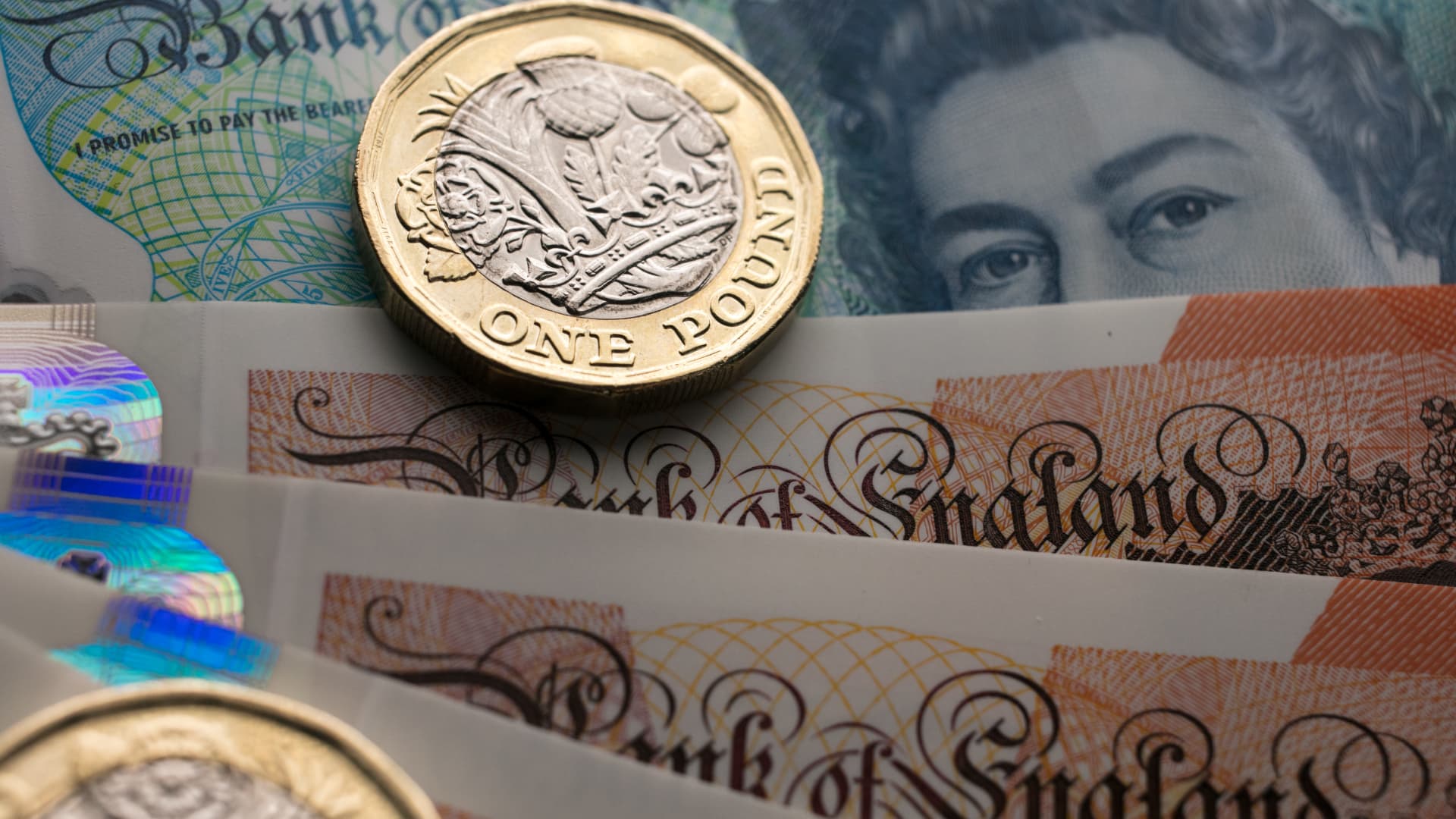Hits: 15

Sterling hit its lowest level since Jul. 1, 2020.
Matt Cardy | Getty Images
The embattled British pound fell more than 2% against the dollar Friday, after the new U.K. government announced a radical economic plan in a bid to boost growth.
Sterling dipped as low as $1.1029 at 12:20 p.m. London time, a couple of hours after the measures were unveiled in the House of Commons. By 1.50 p.m. it was trading around $1.1070.
The pound has been on a precipitous fall against the greenback this year, hitting levels this month not seen since 1985. Friday’s measures were billed by the government as heralding a new era for the U.K. focused on growth, and included a mix of tax cuts and investment incentives for businesses.
Loading chart…
Investors also ditched U.K. bonds amid a rise in expected government debt. Paul Johnson, director of the Institute for Fiscal Studies, said markets appeared “spooked” by the scale of the “fiscal giveaway,” and said it represented the highest level of tax cuts in half a century.
Yields on 2-year U.K. government bonds hit their highest level since October 2007, and 10-year yields reached the highest level since 2010. Yields move inversely to prices.
The 10-year yield was set for its biggest daily rise since 1998, Reuters reported. At 1:45 p.m. it had risen 26 basis points to 3.759%.
U.K. equity markets also fell, with the FTSE 100 hitting its lowest level since March.
It comes after the Bank of England said Thursday that the U.K. economy was likely already in a recession as it raised interest rates by 50 basis points.
Jane Foley, senior FX strategist at Dutch bank Rabobank, said the market appeared skeptical of the government’s 2.5% growth target, though the measures were “unashamedly designed to boost demand.”
“The obvious implication is that BOE rates are likely to be higher for longer than they would have been otherwise. While textbooks suggest that higher short-term interest rates should be currency supportive, GBP has been demonstrating since the spring that this is not always the
case,” she said in a note.
With the U.K. hitting a record debt-to-GDP ratio, the pound is vulnerable to a downward revision if foreign investors are reluctant to fund the deficit, Foley said; and “markets are clearly very doubtful of the ability of this government to manage debt.”
Fiona Cincotta, senior financial markets analyst at City Index, said expectations for a 100 basis point interest rate hike at the Bank of England’s November policy meeting were now climbing.
Cincotta also said it raised the prospect of the pound reaching level with the dollar for the first time in history.
“It’s difficult to see how the pound can recover from here. Investors are pulling out of UK assets rapidly and who can blame them? Drawing comparisons historically, the last big tax giveaway in 1972 resulted in rampant inflation, unmanageable debt, and an IMF bailout,” she said.
“Suddenly pound parity with the USD doesn’t look so unlikely.”
The euro was also down against the dollar Friday afternoon, dropping 1.1% on the day to 97 cents after a release showed the euro zone’s purchasing managers’ index fell to 48.2 in September. S&P Global said it meant the bloc was likely to enter a recession.
The dollar has been boosted this year by equity market volatility and Federal Reserve interest rate rises.
But the negative reaction to the pound was still clear, with the euro climbing 1% against sterling to 0.882.
Be the first to comment